Ryan Hall's Blog, page 320
November 19, 2015
Out There: Young Runners
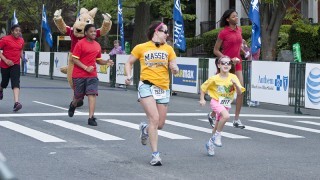
Photo: Shutterstock.com
Can kids run marathons? Should they?
I have a friend who is currently training for a marathon with his daughter. For the last six months, they’ve had a shared routine: On Tuesday nights, they do track workouts. On Thursdays, they fartlek their way through an hour-long game of Tag. Sunday is a day for long runs and even longer strategy sessions over chocolate chip pancakes. The marathon they’ve chosen to race together will fall on her birthday.
She will be 11 years old.
This isn’t the first case of a child running a marathon. Children as young as 5 years old have recorded marathon finishes in the United States (with some pretty impressive times to boot). Programs like Students Run L.A. and Kids Run Miami have thousands of young runners successfully tackle 26.2 miles each year. We have enough evidence that kids certainly can run marathons.
But should they? No. And yes. Maybe. It depends on who you ask, really.
One set of experts calls marathon training “an inappropriate activity for children and adolescents,” while another says marathon training is probably just fine for youth, so long as “the athlete enjoys the activity and is asymptomatic [for injuries].” Take the question to Facebook or Twitter, and you’ll find a few self-proclaimed experts more than willing to share their thoughts on the matter. So who’s right?
“How much running is too much? We don’t really know,” says Dr. Joseph Chorley of Texas Children’s Hospital Sports Medicine Program. Simply put, there hasn’t been enough research to definitively laud or condemn long-distance running for children.
RELATED: Generation Next: America’s Fastest Young Runners
For every young runner who proudly dons a finisher’s medal, there’s another who becomes injured before toeing the start line. Just like adults, long-distance training can lead to overuse injuries in young runners. Unlike adults, however, kids aren’t fully formed. Chorley says a child’s skeletal immaturity can mean long-term complications from common running injuries that would only temporarily sideline an adult runner. Cautious and gradual mileage increases are important for all runners in training, but even more so for those who are still growing.
Young runners also have a lot of growing to do between the ears, too.
“Children are not mini-adults, “says Dr. Karl Erickson of the Institute for the Study of Youth Sports. “They have different needs and different capacities, both physically and psychologically. During childhood, running—and even racing—needs to be fun, not just something they do because an adult told them to. Turning running into work, especially before adolescence, is a recipe for burnout and early dropout of the sport. To me, the critical question is not ‘How much should a child run?’ but rather ‘Why are they running?’
“There can be many risks—social, emotional and physical—that can negatively impact a child during marathon training,” says Eric Spears, Senior Coordinator of Students Run L.A., which helps approximately 3,000 youth successfully train for and race the Los Angeles Marathon. “Overtraining through too many miles or too quick a pace can potentially cause physical issues. Forcing a child to compete if that is not to their liking can lead to a rejection of future physical activity altogether.”
But when done correctly—that is, with a gradual progression, appropriate support from knowledgeable adults, and an emphasis on fun—Spears says marathon training at an early age can create happy and healthy runners for life:
“Students internalize the self empowerment that occurs when one builds upon increasingly difficult short-term goals (5K, 10K, 15K, half-marathon, and 30K) to accomplish the once impossible goal of completing a full marathon. Our finishers prove to themselves and their families that they can do anything if they plan and put in the hard work it takes to complete that goal,” Spears said. “We are still seeing ‘kids’ from our program showing up at races and even marathons 27 years later, who all say they still run because of the great experiences they had as kids.”
“Running can be an amazing and positive experience for young people. However, the way we as adults, as coaches and parents, support and structure children’s participation in running is vital in determining whether running acts as a benefit or detriment for children,” says Erickson. “When we encourage a love of running, when we help children participate on their own terms, it can be an incredibly positive developmental experience, with opportunities for learning all sorts of life lessons.”
***
About The Author:
Susan Lacke does 5Ks, Ironman Triathlons and everything in between to justify her love for cupcakes (yes, she eats that many). Susan lives and trains in Salt Lake City, Utah with three animals: A labrador, a cattle dog, and a freakishly tall triathlete husband. She claims to be of sound mind, though this has yet to be substantiated by a medical expert. Follow her on Twitter: @SusanLacke.
The post Out There: Young Runners appeared first on Competitor.com.
November 18, 2015
Throwback Clip: The Running Store Scene in “Modern Romance”

Want a look inside a vintage running store early in the original running boom? Take a look at this clip from the 1981 movie “Modern Romance,” a romantic comedy directed by and starring Albert Brooks. In the film, Brooks plays a Hollywood film editor who’s suffering relationship troubles and turns to running for help. “Here’s the thing: I just broke up with somebody, and I’m trying to start a new life, and I feel running should be a major part of it.” In this scene, Brooks’ character, Robert Cole, originally considers a beginner’s pair of shoes in the Runner’s Dream all-in-one starter kit, only to get up-sold to a pair of $50 Nikes by the salesman (played by Bob Einstein, aka “Super Dave Osborne”), not to mention two vintage track suits, tube socks, salt tablets, a head band and some ankle weights. (h/t to DumbRunner for bringing it back last week)
The post Throwback Clip: The Running Store Scene in “Modern Romance” appeared first on Competitor.com.
Holiday-Themed Running Socks
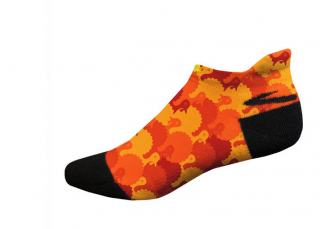
Just as running shoes and running apparel have gone through a brightly colored evolution in recent years, colorful and artistically designed running socks are all the rage right now. Here are a bunch of holiday-themed running socks available online and at selected running stores.
RELATED: Much Ado About Running Socks
Photo Gallery
1 of {count}
Back to Start
View Larger Image
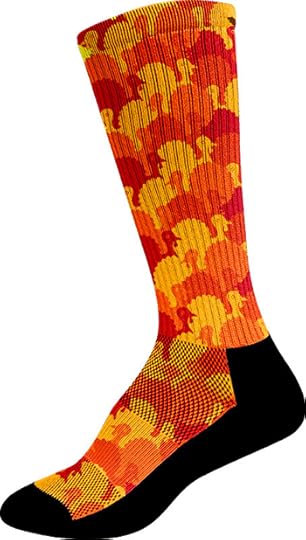
Brooks Thanksgiving Crew Socks, $17
Available at BrooksRunning.com
View Larger Image
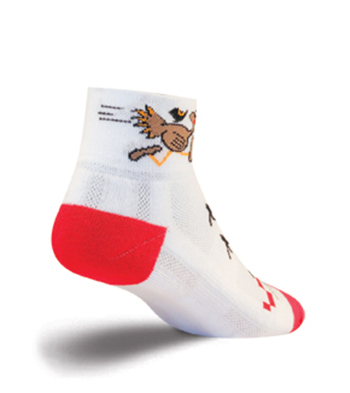
Sock Guy Turkey Trot Crew Socks, $11.95
Available at SockGuy.com
View Larger Image

Now Gobble Later, $18.99
Available at GoneForaRun.com
View Larger Image

Stance Fusion Run Snowflake Threshold Crew, $18
Available at Stance.com
View Larger Image
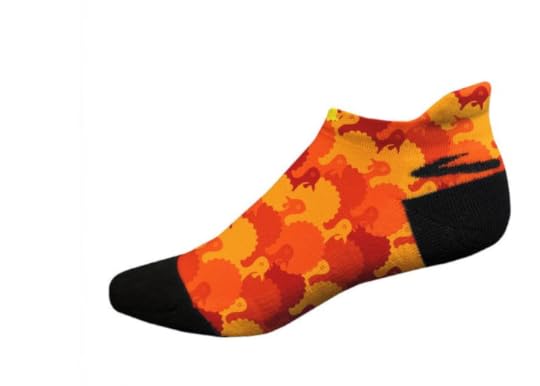
Brooks Thanksgiving Pacesetter Tab Sock, $15
Available at BrooksRunning.com
View Larger Image
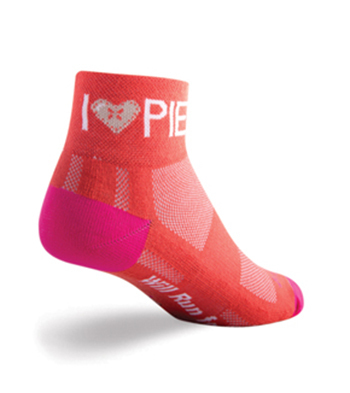
Sock Guy Pot Pie Crew Socks, $11.95
Available at SockGuy.com
View Larger Image
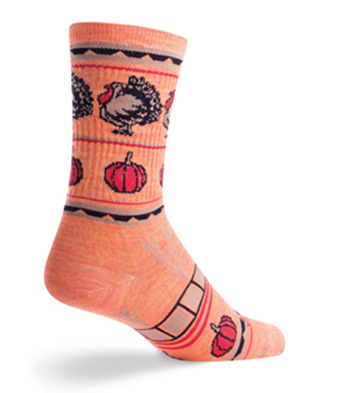
Sock Guy Thanksgiving Crew Socks, $12.95
Available at SockGuy.com
View Larger Image
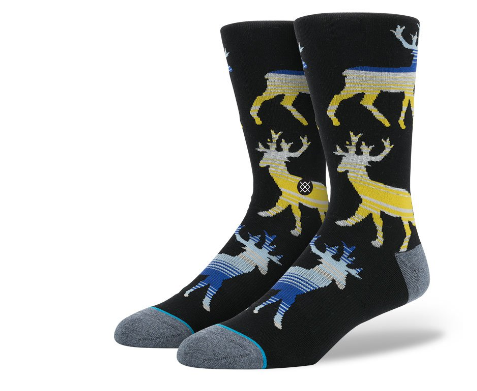
Stance Donner Premium Crew Socks, $14
Available at Stance.com
View Larger Image

Absolute Socks Colorful Menorah Socks, $8.50
Available at AbsoluteSocks.com
View Larger Image
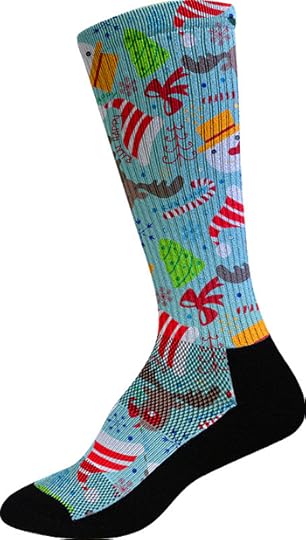
Brooks Xmas Character Crew Socks, $17
Available at BrooksRunning.com
View Larger Image

Stance Dasher Premium Crew Socks, $12
Available at Stance.com
View Larger Image

Red Sweater Wool Performance Crew Socks, $12.99
Available at AbsoluteSocks.com
View Larger Image
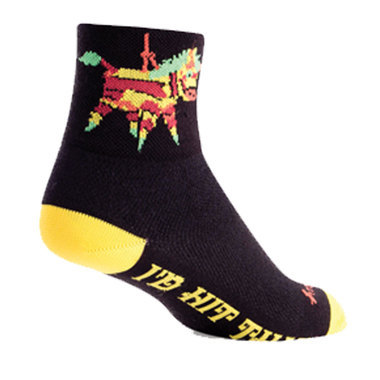
Hit Me Performance Crew Socks, $10.99
Available at absolutesocks.com
View Larger Image

Brooks New Year's Crew Socks, $17
Available at BrooksRunning.com

More Galleries
The post Holiday-Themed Running Socks appeared first on Competitor.com.
19 December/January Races to Sign Up For
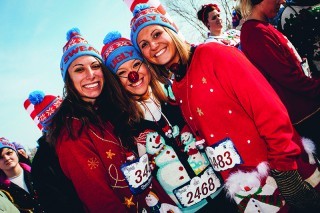
Ugly Sweater Run, Photo: Courtesy of Ugly Sweater Run
As the year wraps up and winter finally settles in for the next few months, it’s easy to take a break. But don’t break for too long—there’s plenty of races in the winter months to do (especially in regions with warmer climes year-round). Either finish off the year running a festive holiday-themed 5K or get a head start on your New Year’s goals with a PR-setting marathon by signing up for one of these races below.
Marathon/Half Marathon
Rock ‘n’ Roll San Antonio
Dec. 6; San Antonio
This marathon, half marathon, 10K and 5K starts and finishes at the Alamodome. You’ll get a scenic tour of this historic city—including a run past the actual Alamo—and live music along the course. After the race, enjoy the beer garden while watching the headlining concert and then dine at a restaurant along the famous San Antonio River Walk.
Tucson Marathon
Dec. 6; Tucson, Ariz.
This popular Boston-qualifier features a downhill, point-to-point course that features an overall loss of 2,200 feet. The race begins in the historic old west town of Oracle and travels through the scenic desert along the Santa Catalina mountain range. Temperatures in the high 30s at the start and high 60s at the end give you every chance to nail that PR or BQ for 2017.
Dallas Marathon
Dec. 13; Dallas
This marathon and half marathon event offers a scenic tour of downtown Dallas, and will be celebrating its 45th running this year. Since 1997 the race has been raising money for the Texas Scottish Rite Hospital for Children, donating more than $3.75 million. The marathon course is relatively flat, and the post-race party features beer, food trucks and live music.
Kiawah Island Marathon
Dec. 13; Kiawah Island, S.C.
If you’re looking for a place to relax after a marathon, you don’t have to go far at the Kiawah Resort, which has been hosting this marathon just south of Charleston for 38 years. The island, which is known for its golf courses and natural settings, features a route that highlights the maritime forests, marshes and ocean views.
Clearwater Distance Classic
Jan. 17; Clearwater, Fla.
Featuring a 50K, marathon, half marathon and 5K, this race takes full advantage of the beautiful Clearwater beaches on the Gulf Coast. The race begins just before sunup, resulting in a beautiful view of the sunrise over Clearwater Bay during the race. Enjoy fresh Florida oranges before the start and a mostly flat and fast course.
Maui Oceanfront Marathon
Jan. 17; Maui, Hawaii
If you’re looking for a smaller marathon to enjoy during a vacation, it’s hard to think of a better place than Maui. The Maui Oceanfront Marathon is a community event that raises money for local school teams and clubs, with a point-to-point course that offers plenty of jaw-dropping views of both the ocean and mountains.
The post 19 December/January Races to Sign Up For appeared first on Competitor.com.
Workout of the Week: The Split Long Run

Reduce injury risk while enjoying the benefits of a long run by occasionally splitting it up. Photo: Rihardzz / Shutterstock.com
Over the past 10 years of working with a wide range of athletes, one of the key observations I’ve made in evaluating training programs is there comes a point of diminishing returns regarding the long run, meaning that once a runner reaches a certain amount of time on their feet in a single training run, the risks of going longer outweigh the rewards.
Where that point falls depends on the athlete, their experience level, injury history and competitive goals. For some newer runners, that point might be 90 minutes, for others it’s 2 hours and for those who have years of big mileage and many long races under their belts, it can extend into the 2:30 to 3-hour range or even beyond. Part of the fun of coaching is trying to solve this piece of the training puzzle.
So the question is: When training for longer races, how can we get the most out of our long runs and push back that point of diminishing returns without forcing a massive long run week after week?
One of the most effective solutions I’ve used to prepare athletes for longer races is the split long run. I first learned of this idea from Patrick Wheeler, a professional triathlete and coach with QT2 Systems. The coaches of QT2 use the split long run, which involves two medium-length long runs in the same day, with their half-Ironman and Ironman triathletes, but it can work for half marathoners, marathoners and ultrarunners too.
Wheeler says that by splitting the long run into shorter segments with a few hours of recovery in between, athletes are better able to practice running with good form, as well as prime their bodies for the physical and nutritional demands of a long event.
“It’s to hit that second run already beat up and to force yourself physically and mentally to focus and run with good form,” Wheeler explained to me in an article for Triathlete.com. “You’re not going to feel as bad as the last 10K in the Ironman, but it’s pretty close. It’s also to help force your stomach to get used taking in food, digesting food and working out basically all day long.”
The split long run isn’t a full-on replacement for all of your long runs—it’s an effective alternative to doing one huge long run of 2-plus hours every week, where injury risk increases as form breaks down and fueling tends to suffer. QT2 athletes, for example, rarely run longer than 2 1/2 hours in a single session, but might total three hours of running in a single day using the split long run.
“Most athletes we coach are between 2:10 and 2:15; some are only around two hours,” Wheeler explains. “Obviously, the more durable a person is and the longer they’ve been doing it, the closer to the higher end of that range they’ll be, but the main goal is to get someone to a point where we feel they’re durable enough to finish the whole thing.”
RELATED: The Art of Peaking for a Goal Race
So how can you make the split long run work for you?
For the half marathoners, marathoners and ultrarunners I coach, I’ll assign traditional long runs in the range of 2-3 hours (I rarely go longer than 3 hours in a single run except for experienced ultramarathoners), which may take the form of time on feet at an easy to moderate pace, a progression run down to marathon or half-marathon race pace, or include intervals of varying speeds. Every 3-4 weeks, however, I like to assign a split long run as a way to break things up, get more time on feet than we otherwise could in a single session, and to practice running race pace on tired (but fresher) legs while working on dialing in our fueling strategy. Depending on the athlete, what they’re training for and where they are in their training cycle, here are a few examples of what a split long run could look like:
Split Long Run 1: Beginner Half-Marathoner
AM: 60 minutes at easy to moderate training pace
PM: 60 minutes with 10 x 1:00 @ 10K pace/1:00 easy mid-run
Split Long Run 2: Experienced Half Marathoner or Beginner Marathoner
AM: 75 minutes at easy training pace
PM: 75 minutes with last 40-60 minutes at goal marathon pace
Split Long Run 3: Experienced Marathoner
AM: 90 minutes with last 20 minutes at goal half marathon pace
PM: 90 minutes with last 30-40 minutes at goal marathon pace
Split Long Run 4: Experienced Marathoner or Ultramarathoner
AM: 2 hours with middle 60 minutes at goal marathon pace or 2 hours easy
PM: 90 minutes to 2 hours with 5 x 5:00 @ half marathon pace/5:00 easy mid-run
The post Workout of the Week: The Split Long Run appeared first on Competitor.com.
Coach Culpepper: Don’t Fight the Weather, Deal With It

Photo: iStockphoto.com
It’s often said that running in harsh weather conditions makes you tougher. But does it? There are times to break from your routine and times to push onward. If unusual circumstances demand compromise, be creative with your training. By adapting your workouts with small adjustments or schedule changes, you can still maximize your training efforts, avoid injuries and maintain your long-term psychological composure. Here are a few scenarios in which runners should reconsider their outdoor plans:
Strong Winds
Fighting it: You have planned a long run with a training partner on a standard loop in which you know the mile markers. But when the time comes to do the run, you find that the wind is blowing at 25 mph and gusting even harder. Instead of changing your plans, you forge ahead and get battered by the wind for two hours, which crushes your confidence.
Dealing with it: Instead of starting a long run in miserably windy conditions, you and your training partner delay the run for a few hours to see if conditions improve. This doesn’t mean you are weak or lack toughness; it means you’re smart and want to get the benefits of the long run without the detrimental side effects.
Unbearable Heat
Fighting it: You have a tempo run planned that you normally run at lunchtime, but the weather is much warmer than expected. You head out in the heat of the day and wind up cooked from your efforts as dehydration and fatigue take their toll over the next several days.
Dealing with it: Instead of pushing on through the heat, you consider pushing your workout back a day or shifting the session until later that afternoon, when it is cooler. You get the benefits of running at a sustained tempo pace without the lingering negative effects brought on by the heat.
Unexpected Snowfall
Fighting it: You wake up on a morning when you have a speed workout planned to find that a few inches of snow have fallen overnight. You forge ahead with the workout on your normal loop and find yourself frustrated by the slow pace due to the slippery ground. Not to mention putting yourself at greater risk of injury from the unstable footing.
Dealing with it: You decide to either simulate the workout on an indoor track or on a treadmill, or bump the workout to the next day.
RELATED:
—Coach Culpepper: 3 Tips for Optimal Winter Running
—9 Great Waterproof Shoes for Fall/Winter Running
The post Coach Culpepper: Don’t Fight the Weather, Deal With It appeared first on Competitor.com.
Video: Relive the Magic of Rock ‘n’ Roll Las Vegas

If you couldn’t make it the GEICO Rock ‘n’ Roll Las Vegas Marathon and 1/2 this year, check out this 3- minute video that re-lives the fun—from the 5K on Saturday to all the festivities that took place Sunday.
The 2016 race weekend is Nov. 10-13.
RELATED: Photos: 2015 Rock ‘n’ Roll Las Vegas
The post Video: Relive the Magic of Rock ‘n’ Roll Las Vegas appeared first on Competitor.com.
Brooks Signs Beer Mile World Record Holder Lewis Kent
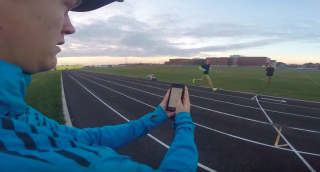
After running an unofficial world record of 4 minutes and 51.9 seconds for the beer mile on Tuesday night (video embedded above), 22-year-old Lewis Kent announced he had signed a two-year shoe and apparel deal with Brooks Running—the first known sponsorship of its kind—according to ESPN’s Darren Rovell.
“It’s pretty surreal,” Kent, a student at the University of Western Ontario, told Rovell on Wednesday. “I’ve always liked to run and drink beer, but I never thought I would be considered world class for doing both.”
Terms of the deal were not disclosed but it does include bonuses for some of the biggest beer mile events, including FloTrack’s World Beer Mile Championships, which will be held on Dec. 1 in Austin, Texas. After running a world record of 4:55.78 on August 7, Kent ran 5:07 and change to win the World Beer Mile Classic in San Francisco on August 22, which spurred conversations with Brooks regarding a sponsorship deal.
“I’m on top of the world,” Kent said after his win in August. “This means everything to me!”
And now those wins will pay off even more in the future.
PHOTOS: 2015 Beer Mile World Classic
The post Brooks Signs Beer Mile World Record Holder Lewis Kent appeared first on Competitor.com.
3 Secrets of Legendary Coach Arthur Lydiard
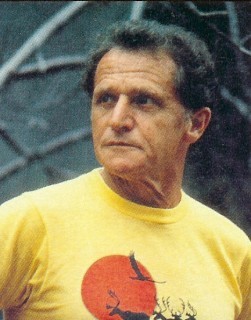
Arthur Lydiard. Photo: lydiardfoundation.org
It’s not hard to start a conversation about famed running coach Arthur Lydiard. The New Zealander, who passed away in 2004, forever changed the sport of distance running by way of his influential teachings. He coached athletes like Peter Snell to the Olympic podium and was a prolific writer in his own right. Lydiard was also a dynamic speaker who preached his training philosophy like a fervent evangelist, creating disciples who still quote him in a quasi-religious way.
Lydiard was a legend, but unfortunately he gets labeled as an elitist and “the long, slow distance guy” who preached rigid periodization in training. At risk of his important teachings being oversimplified and misunderstood, it’s critical that we dig deeper into three of Lydiard’s most under-acknowledged secrets of success:
1. Lydiard believed in speed work.
“Far too many people think Lydiard training is all about long, slow distance running,” says Nobuya “Nobby” Hashizume of the Lydiard Foundation. “How many people realize that he used to have his runners, even marathon runners, compete in a 100-meter dash in a local track meet?” Hashizume contends that many people who study Lydiard’s teachings come away thinking that a lot of long, slow distance is the answer to successful running. He calls it “the plodding zone” and says that Lydiard did believe in 100-mile training weeks, but only to build aerobic strength to prepare the body for race-pace work that followed.
Greg McMillan, founder and head coach of McMillan Running, says that Lydiard’s anaerobic and lactate threshold workouts are often forgotten. “It’s important to remember that [Lydiard] was working with very competitive runners training for shorter distances and though everyone talks about his endurance or base phase, his programs have a lot of fast running as the race nears,” he says. McMillan points out that it wasn’t uncommon for Lydiard’s athletes to perform 20-40 x 400-meter repeats in the morning and repeat the same workout in the evening, 6-7 days per week.
2. He called for flexible, individualized training.
Many runners think of Lydiard as someone who followed a one-size-fits-all approach, but that wasn’t the case. “As the runner got into the race-specific training, Lydiard was doing many, many test runs and based on how these runs went, the athlete would adjust the program going forward,” says McMillan, who accompanied Lydiard on his final U.S. tour before he passed away. Lydiard knew that flexibility was a vital component to success and that both the coach and athlete had to work together closely in order to observe how the body and mind responded (and recovered) from training and racing. “They had to then adjust to build on the strengths and shore up the weaknesses,” McMillan says.
Rod Dixon, winner of the 1983 New York City Marathon, used to listen to Lydiard speak when he was a young runner in New Zealand and says that Lydiard encouraged “learning by doing.”
“He told us to apply the principles he taught to our own environment,” Dixon recalls. “He wanted us to evolve as runners and keep things simple—not to make the sport a complex formula. We knew that we wouldn’t respond the same way to everything; we learned that we had to adapt in order to run well.”
3. The potential to improve exists in everyone.
Lydiard is best known for the grueling workouts he passed on to the likes of Snell and for attracting the very best runners who were aiming for the Olympic podium, but what many don’t realize is that he worked with runners of all ability levels. “Lydiard is often described as a hard-nosed elitist coach who insisted everybody to run 100-miles-a-week,” says Hashizume. “Quite far from it. Remember, he was not only a maker of champions but also the father of jogging.”
In 1961, Lydiard gathered 20 obese middle-aged runners who couldn’t run a single lap around the track and coached them to run a 4-hour marathon in just eight months. “Arthur’s jogging program was ahead of its time,” says McMillan. “Bill Bowerman and subsequently Jeff Galloway saw how this idea was very, very beneficial to the masses of runners who weren’t trying to go the Olympics but wanted a more appropriate running routine to get them fit and healthy.” Hashizume says that his mentor maintained “hope for positive human potential” and told him that one can never know their true potential until they train systematically and intelligently for three to five years.
RELATED: The Basics of Base Training For Runners
The post 3 Secrets of Legendary Coach Arthur Lydiard appeared first on Competitor.com.
November 17, 2015
Market Watch: What Holiday Gift Ideas Would You Recommend for a Runner?

We asked eight owners and managers of specialty running stores around the country their holiday gift ideas for a fellow runner.
RELATED: 2015 Gotta-Have-It Holiday Gear Guide
Photo Gallery
1 of {count}
Back to Start
View Larger Image
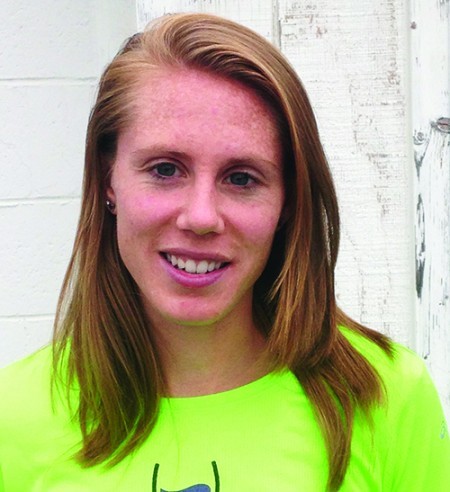
Megan Digregorio, Manager, Falls Road Running, Baltimore
“The New Balance Tri-Viz hat is a great gift for those who run in the dark. With the light setting built into the hat, it’s easy to see everything in front of you and for people to see you.”
View Larger Image

Kim AuBuchon, COO, Big River Running Company, St. Louis
“The best gifts are things you normally wouldn’t splurge on for yourself and also have that wow-factor. As a runner, I would be thrilled to receive a new GPS watch like the Garmin Forerunner 25 or a great outer layer like the Saucony Nomad Jacket.”
View Larger Image
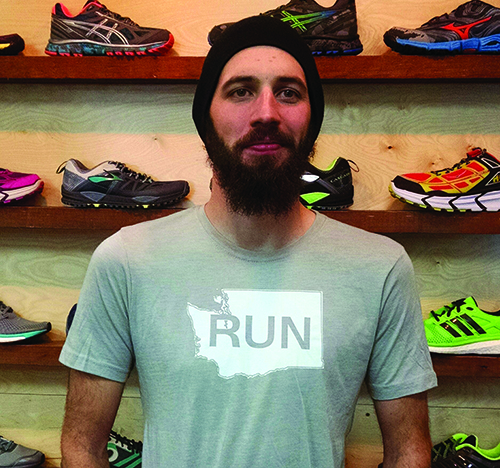
Fritz Fitzer, Manager, Foot Traffic, Portland, Ore.
“My go-to holiday gift for runners is a Smartwool beanie. The merino wool is non-scratchy and is perfect for temperature regulation during the ever-shifting weather of fall, winter and spring.”
View Larger Image
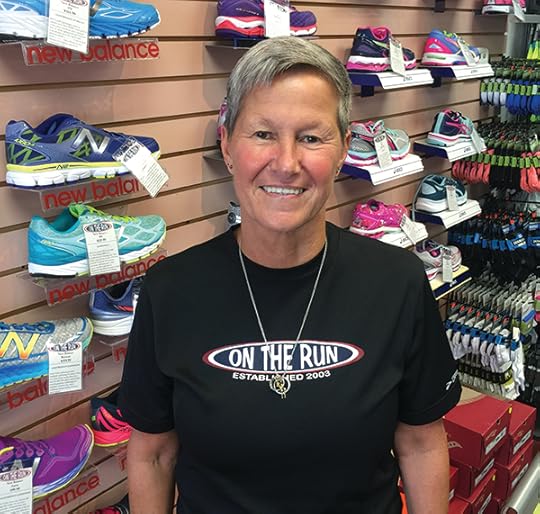
Cheryl Brand, Manager, On the Run, Houston
“The best gift to give a runner for the holidays is a pair of running shoes or a GPS watch. Proper running shoes are necessary, and getting fit at a specialty running store is essential. GPS watches are multifunctional and will help keep your training in check.”
View Larger Image

Bill Davison, Owner, The Running Center, Tampa, Fla.
“The best gift we can offer our customers is our time and experience. We do not charge for our gait analysis and want to ensure that each guest is wearing a great-fitting shoe.”
View Larger Image

Laurie O'Hanlon, Assistant Manager, Super Runners Shop, Huntington, N.Y.
“The best item to give a runner for the holidays is a headlamp. It’s an easy purchase as it does not need sizing, is not footwear nor body size specific. Being able to see is a profound motivator for any runner who wants to continue running outside during the ‘dark months.’”
View Larger Image

Mike Shuman, Owner, Shu's Idaho Running Company, Boise, Idaho
“The Garmin Forerunner 25 makes a great gift for any runner. It’s a great watch for tracking your miles, paces, heart rate and calories with a long-lasting battery. Even non-techy runners would appreciate the options on this watch as well as the price.”
View Larger Image
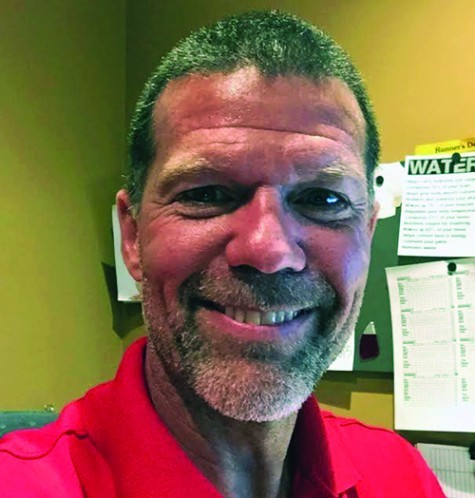
Ron French, Manager, Runner's Den, Phoenix
“Fall apparel is a great holiday gift idea. The weather finally cools off here in Phoenix, so it’s the perfect opportunity to check out the new cool-weather apparel arrivals. Also, gift cards. They’re always the correct size and color.”
Related Galleries

Market Watch: Which New Shoe Releases Are You Most Excited About?

Market Watch: What Should Beginners Look For When Buying Their First Pair of Running Shoes?

Market Watch: What Do You Look For in a Good Trail Running Shoe?

Market Watch: What’s Trending in Running Apparel This Season?

More Galleries
The post Market Watch: What Holiday Gift Ideas Would You Recommend for a Runner? appeared first on Competitor.com.
Ryan Hall's Blog
- Ryan Hall's profile
- 21 followers



